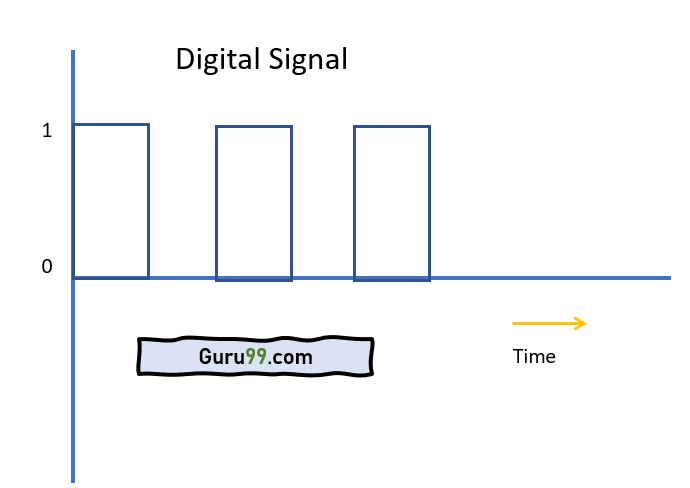Ethical Hacking
How to Crack a Password
What is Password Cracking? Password cracking is the process of attempting to gain Unauthorized...
A signal is an electromagnetic or electrical current that is used for carrying data from one system or network to another. The signal is a function that conveys information about a phenomenon.
In electronics and telecommunications, it refers to any time-varying voltage that is an electromagnetic wave which carries information. A signal can also be defined as an observable change in quality such as quantity
In this tutorial, you will learn:

Analog signal is a continuous signal in which one time-varying quantity represents another time-based variable. These kind of signals works with physical values and natural phenomena such as earthquake, frequency, volcano, speed of wind, weight, lighting, etc.

A digital signal is a signal that is used to represent data as a sequence of separate values at any point in time. It can only take on one of a fixed number of values. This type of signal represents a real number within a constant range of values.
Here, are essential characteristics of Analog Signal
Here, are essential characteristics of Digital signals
Here are important differences between Analog and Digital Signal:
| Analog | Digital |
| An analog signal is a continuous signal that represents physical measurements. | Digital signals are time separated signals which are generated using digital modulation. |
| It is denoted by sine waves | It is denoted by square waves |
| It uses a continuous range of values that help you to represent information. | Digital signal uses discrete 0 and 1 to represent information. |
| Temperature sensors, FM radio signals, Photocells, Light sensor, Resistive touch screen are examples of Analog signals. | Computers, CDs, DVDs are some examples of Digital signal. |
| The analog signal bandwidth is low | The digital signal bandwidth is high. |
| Analog signals are deteriorated by noise throughout transmission as well as write/read cycle. | Relatively a noise-immune system without deterioration during the transmission process and write/read cycle. |
| Analog hardware never offers flexible implementation. | Digital hardware offers flexibility in implementation. |
| It is suited for audio and video transmission. | It is suited for Computing and digital electronics. |
| Processing can be done in real-time and consumes lesser bandwidth compared to a digital signal. | It never gives a guarantee that digital signal processing can be performed in real time. |
| Analog instruments usually have s scale which is cramped at lower end and gives considerable observational errors. | Digital instruments never cause any kind of observational errors. |
| Analog signal doesn't offer any fixed range. | Digital signal has a finite number, i.e., 0 and 1. |
Here, are pros/benefits of Analog Signals
Here, are pros/advantages of Digital Signals:
Here are cons/drawback of Analog Signals:
What is Password Cracking? Password cracking is the process of attempting to gain Unauthorized...
What is Digital Forensics? Digital Forensics is defined as the process of preservation,...
Ethical hacking is identifying weaknesses in computer systems or networks to exploit its...
Computers communicate using networks. These networks could be on a local area network LAN or...
Wireless networks are accessible to anyone within the router’s transmission radius. This makes...
Wireshark is a widely used network monitoring and WiFi troubleshooting tool. However, with...